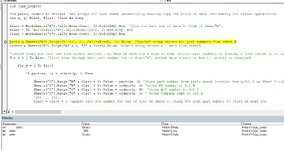Hello - I have a list of part numbers (1400) on worksheet "A", and a list of orders (25K) on worksheet "B".
I'd like to take each item number appearing in a list on worksheet "A" and find instances of that part in worksheet "B", while returning data from adjacent cells (such as acct name & order number). The output of this can be put in worksheet "C". There will definitely be multiple instances of any given part number within worksheet "B".
What's the easiest way to do this?
Thanks!
I'd like to take each item number appearing in a list on worksheet "A" and find instances of that part in worksheet "B", while returning data from adjacent cells (such as acct name & order number). The output of this can be put in worksheet "C". There will definitely be multiple instances of any given part number within worksheet "B".
What's the easiest way to do this?
Thanks!






